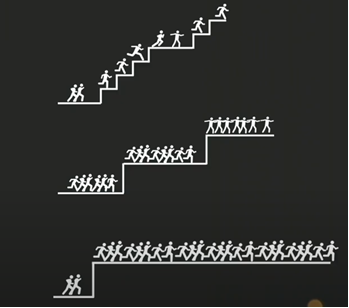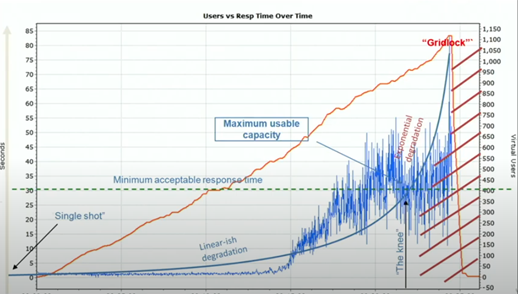
Although an online platform hinges on the performance of multiple parties, such as architects, app builders, hosting parties, service engineers and network administrators, according to the site visitor, the fault lies with the service owner. And that's understandable. When you have to wait four seconds for each page to load, you'd rather go to a competitor and have no concern about who is at fault. Each e-commerce manager knows that when products are only added to a shopping cart after three seconds, about 70% of visitors drop out.
How do you avoid these issues, which mostly manifest during peaks? In this article, we sum up the solution in three words: testing, monitoring, scaling.
Testing
You want to know what your website can handle. And preferably before you have to process such heavy traffic that your website can't handle it anymore. So testing, testing, testing is our devise. Sentia carries out three principle types of tests for its customers, including large webshops such as Beslist.nl and Rituals. With a load test you gradually increase the load on the site and see at what point the environment starts to slow down. With a stress test, instead of the gradual increase, you bombard the site with more and more data at an ever-increasing speed to quickly find the inevitable breaking point. And with the endurance test, you analyze the endurance of the site; you look at how long its performance remains up to standard.

The objective of all these tests is finding the breaking point ('the knee') of the platform: the point at which the maximum usable capacity and the minimum required response time meet. Above that 'joint', your site becomes too slow and you lose visitors, and therefore revenue.

That breakpoint, which should shift in time due to maintenance, is used as a baseline throughout the life cycle of the website. If that baseline is acceptable for the purpose for which the site was developed, then the existing infrastructure or application suffices. If not, action must be taken to shift the baseline to the desired point.
Monitoring
Once the infrastructure is set up to your satisfaction, the key is to keep an eye on how the platform continues to perform. One way to do this is through synthetic performance monitoring, where robots perform performance checks 24/7, ensuring that you are not strictly reliant on user interaction. At regular intervals, for example each minute, a measuring station sends a request to the website or web service, measures the response times and generates reports and alerts based on the performance of the site during the test. Again, a baseline can be defined from this procedure, and optimized by testing under different conditions, for example, after changes in the source layer or in the web shop. If the measurements show delays - or even unavailability - solutions can be implemented, preferably before actual users suffer impact.
Scaling
The third component to managing peaks is ensuring that the platform is scalable. As the amount of information being processed grows, an application may need additional resources to maintain the desired level of performance. When those extra resources are no longer being utilized, the resource allocation can be undone. An important advantage of this approach, which is characteristic of the cloud, is that costs are always completely in line with the resources used. While a webshop, for example, often has a lot of overcapacity in hardware when using its own servers 'just to be sure', the cloud offers optimal flexibility and capacity, even during the highest and most unpredictable peaks.
There are two ways in which an application can be scaled: vertically and horizontally. Vertical scaling involves adjusting the capacity of a resource and often makes a system temporarily unavailable. Because of this, it is less common to automate vertical scaling. In horizontal scaling, copies of a resource are added or removed. The adjustment is performed without interruption, and is therefore easy to automate.
Digital experience is king
For many companies, this approach to testing, monitoring and scaling may sound a little too technical, too labor-intensive and too expensive. "Technical? That's right. Labor-intensive? Not for the site owner. And expensive? That's absolutely up to perspective. The better you know the minimal and maximum expectations of your visitor or customer, the more effectively you can scale and the more pleasant the user experience gets. The profit you make is considerably higher than the initial investments. A successful site starts with a great user experience, which begins with a smart, scalable environment that neatly handles all visits 24/7. Particularly at peak times.



